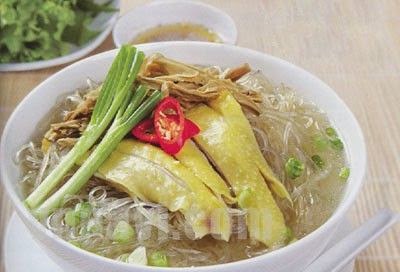Legend has it that chopsticks were invented in China by two poor, hungry peasants who had stolen a piece of meat. They beat a hasty retreat into the forest to cook their meal but didn't have time to bring knives. The clever thieves grabbed a pair of sticks each from the forest floor and used them to rip off pieces of the still-sizzling meat from the fire.
Confucius is credited with encouraging the spread of chopsticks by writing that "the honorable man allows no knives at his table." That is why food is typically cut into bite-sized pieces in Chinese cooking, and as the author says, "... out of necessity, a table without knives became a table with chopsticks."
Chopsticks have been used in China for over three thousand years. It is interesting to note that they were using chopsticks while most of the world was still eating with their fingers, and at least two thousand years before the invention of the fork.
The use of chopsticks spread from China to Korea, Japan, and Vietnam. In Vietnam, To find out more detailed about how to use chopsticks with Hanoi culture. Don't hesitate to join Hanoi food culture by taking the hanoi food tour with locals. Here you will be taught how to use by guides. They failed to catch on, however, in Thailand and Cambodia, presumably because those countries drew their influence more from India, Asia's other culinary giant.
It is curious indeed that the great explorer Marco Polo--although he spent more than 20 years traveling throughout China--never mentioned chopsticks in his journals. But then he never mentioned the Great Wall of China either even though he would have crossed it several times.
The Japanese have a saying for a thing that is hard to understand. They insist that "understanding what you are saying is like ladling soup with a chopstick." No confusion there.
A Japanese Buddhist monk named Kukai, who lived in China for many years, is credited with introducing chopsticks to Japan. Apparently, he handed them out to everyone he met (the author calls him the "Johnny Appleseed of chopsticks"), telling them that if they used them, Buddha would help relieve the stress of their lives.
Chinese folklore says that people who use three fingers to manipulate their chopsticks are easygoing by nature. Those who use four fingers are well omened. Those who can manage to get all five fingers involved and still keep them under control are said to be destined for greatness.





%25201.jpg&container=blogger&gadget=a&rewriteMime=image%2F*)







.jpg&container=blogger&gadget=a&rewriteMime=image%2F*)
.jpg&container=blogger&gadget=a&rewriteMime=image%2F*)
.jpg&container=blogger&gadget=a&rewriteMime=image%2F*)
.jpg&container=blogger&gadget=a&rewriteMime=image%2F*)
.JPG&container=blogger&gadget=a&rewriteMime=image%2F*)
